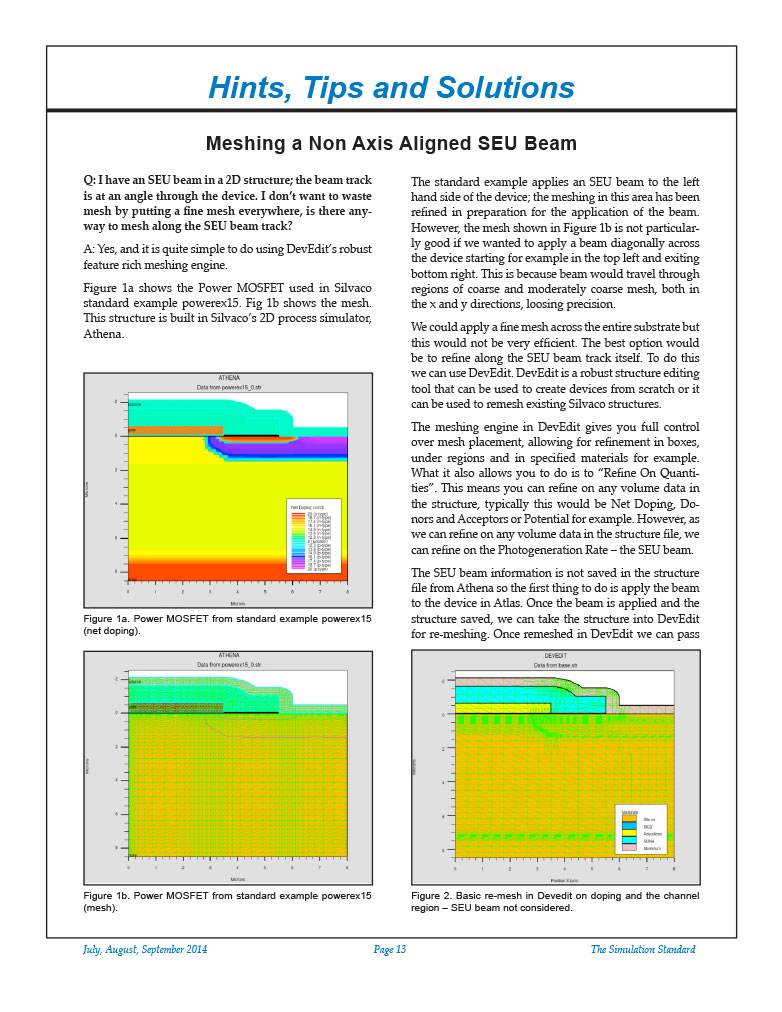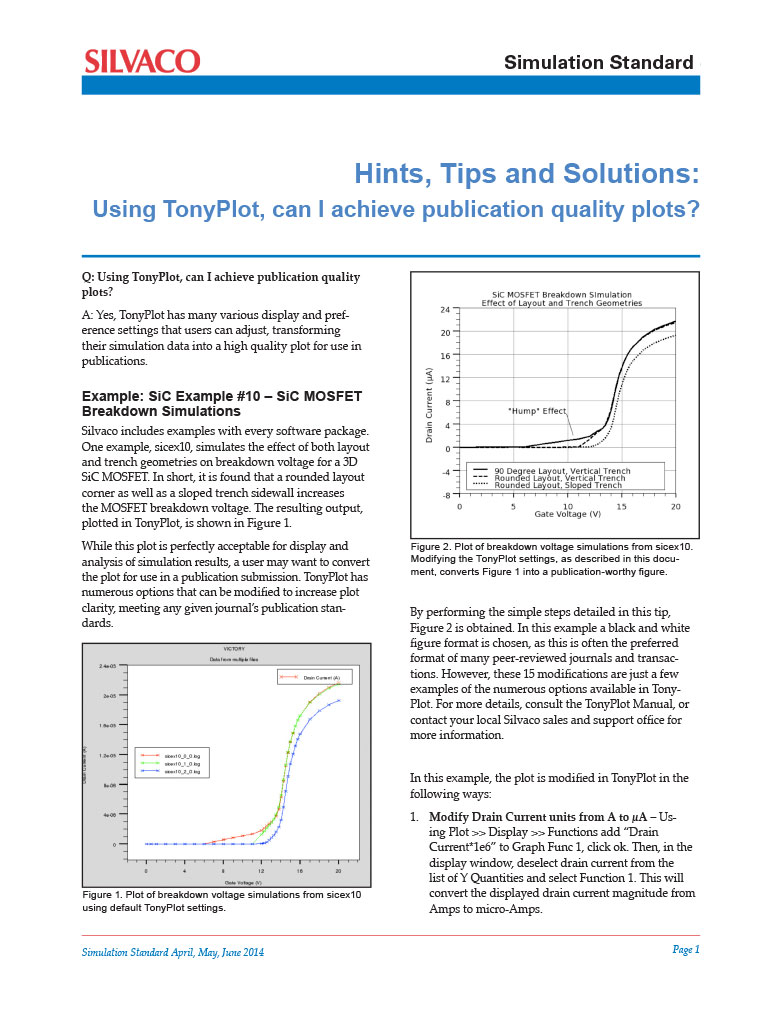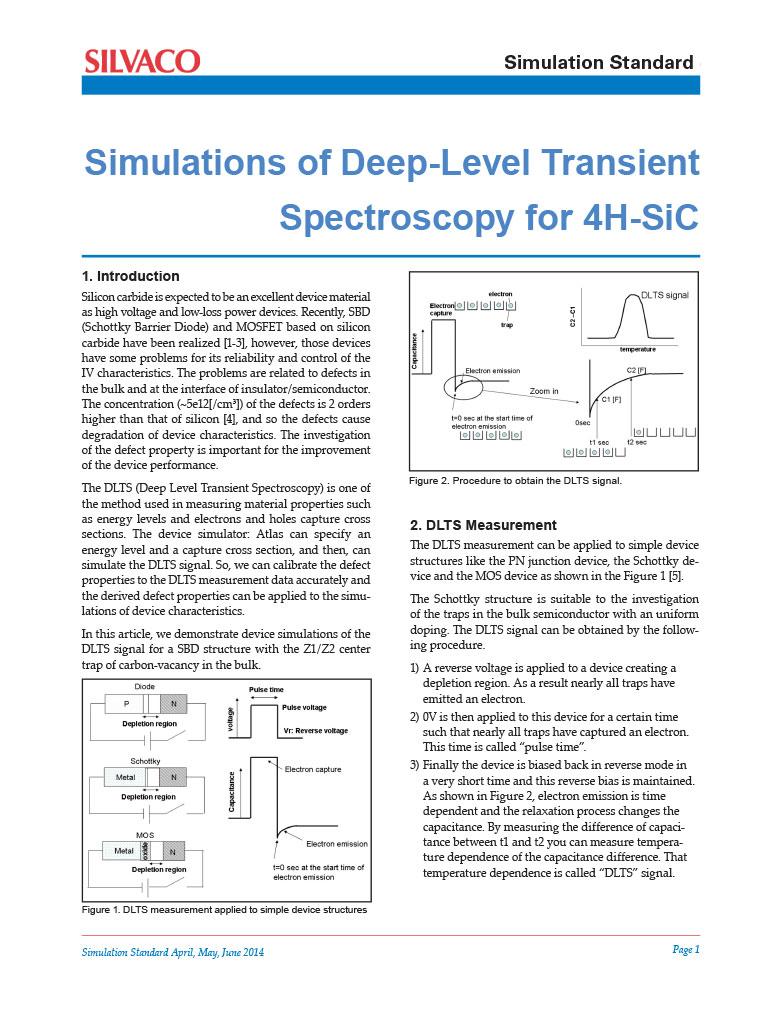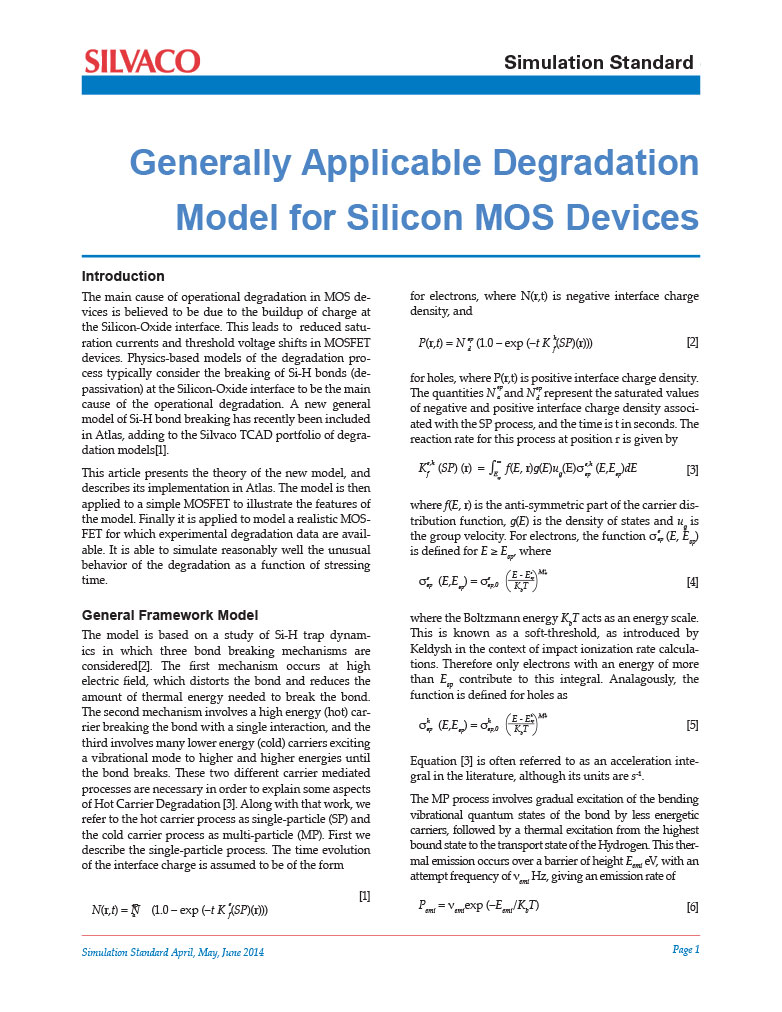Simulation Standard Technical Journal
A Journal for Process and Device Engineers

Hints, Tips and Solutions – Meshing a Non Axis Aligned SEU Beam
Q: I have an SEU beam in a 2D structure; the beam track is at an angle through the device. I don’t want to waste mesh by putting a fine mesh everywhere, is there anyway to mesh along the SEU beam track?A: Yes, and it is quite simple to do using DevEdit’s robust feature rich meshing engine.

Hints, Tips, and Solutions – Calculate Light Extraction Efficiency in an OLED or LED with Pure Optical Simulation
Calculation of light extraction efficiency or optical output coupling efficiency is often needed in simulating a light emitting device (LED) such as an organic LED (OLED). It is best to perform these calculations without running electrical simulation in the device, as parameters for new materials are hard to obtain and generally unnecessary in calculating light extraction efficiency. Moreover, a pure optical simulation will save simulation time and avoid any potential un-convergence in the electrical simulation.

Hints, Tips, and Solutions – Achieve Publication Quality Plots Using TonyPlot
Yes, TonyPlot has many various display and preference settings that users can adjust, transforming their simulation data into a high quality plot for use in publications.

Simulations of Deep-Level Transient Spectroscopy for 4H-SiC
Silicon carbide is expected to be an excellent device material as high voltage and low-loss power devices. Recently, SBD (Schottky Barrier Diode) and MOSFET based on silicon carbide have been realized [1-3], however, those devices have some problems for its reliability and control of the IV characteristics. The problems are related to defects in the bulk and at the interface of insulator/semiconductor. The concentration (~5e12[/cm3]) of the defects is 2 orders higher than that of silicon [4], and so the defects cause degradation of device characteristics. The investigation of the defect property is important for the improvement of the device performance.

Generally Applicable Degradation Model for Silicon MOS Devices
The main cause of operational degradation in MOS devices is believed to be due to the buildup of charge at the Silicon-Oxide interface. This leads to reduced saturation currents and threshold voltage shifts in MOSFET devices. Physics-based models of the degradation process typically consider the breaking of Si-H bonds (depassivation) at the Silicon-Oxide interface to be the main cause of the operational degradation. A new general model of Si-H bond breaking has recently been included in Atlas, adding to the Silvaco TCAD portfolio of degradation models[1].

Hints, Tips, and Solutions – Simulation on a Cluster of Computers Using the Distributed Computing Feature
A new feature that is introduced in Silvaco’s TCAD applications allows the user to run a parallel simulation on a cluster of computers within a network.

